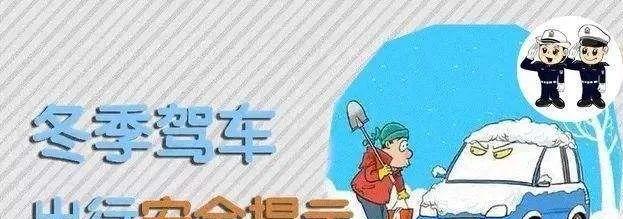Winters are frosty, foggy, rainy and snowy, and temperatures are low
It adds a lot of difficulty to the driver to drive
It also brings many disadvantages to driving safety
In order to ensure driving safety in winter
The Yanshan traffic police brought a winter driving safety tip
Please check it out!

1. Before leaving the car, the driver must carefully check the safety equipment on the car: steering, braking, lights, instruments, horns, wipers, etc. to be complete and effective; especially long-distance transport vehicles or large buses, to be equipped with anti-slip tools, such as triangle wood, traction steel rope, pickaxe or hoe, snow chain, etc. The air pressure of the whole vehicle tire should be in line with the standard, the air pressure should not be too high, and the tire pattern should be installed symmetrically. When leaving the car on a foggy day, the windshield glass and the headlight glass should be wiped clean, and the anti-fog lights, low beam lights, front and rear small lights and width lights and tail lights should be turned on according to the regulations, and the lights should be fully utilized to improve visibility and see the road ahead, vehicle and pedestrian dynamics.
2. Smooth driving. After the snow in winter, the road is slippery, pay attention to the smooth speed and uniform operation when driving, such as violent acceleration, sharp braking, sudden turning, etc. are all taboos for snow driving. Smooth acceleration during travel, medium and low speed driving.
3. Slow refueling. When starting and accelerating, the refueling should be light and slow to prevent tire slippage and skidding. Because you refuel too quickly, the driving force of the vehicle is greater than the adhesion of the road surface, resulting in idling of the driving wheels and the lateral offset of the vehicle. Therefore, the throttle must be well controlled so that the driving force is less than the adhesion of the road surface, so as to avoid or reduce the occurrence of slippage and lateral slippage.
4. Decelerate. When decelerating, it is necessary to make full use of the resistance of the engine to decelerate, that is, to quickly release the throttle without disengagement and without stepping on the clutch, so that the engine speed drops immediately, forcing the drive wheel speed to decrease, and slowing down the vehicle. If you need to use the brake to stop, you must also use the engine brake to reduce the speed of the car, and then gently press the brake. Emergency braking is absolutely prohibited on snow and ice roads to prevent the vehicle from sliding. Cars without ABS should pay special attention to prevent side slippage. Stop the car to try to choose a clearing without ice and snow, tighten the handbrake suspension gear, and if necessary, pad the wheels.
5. Slow steering. When turning, be sure to slow down first, increase the turning radius appropriately and slow down the steering wheel. The operation of the steering wheel should be smooth and gentle, otherwise it will also slide sideways, so that the rear of the car is thrown outward (tail flick). The reason for the lateral slippage caused by the turning is due to excessive steering, the steering wheel is deflected laterally, resulting in a sudden increase in the front resistance of the vehicle, and the tail is thrown outward under the action of inertia. Once a side slip occurs, it can be lifted by means of an appropriate return wheel.
6. Skilfully go uphill and downhill. Snow ramps are more difficult to drive, and the upper and lower slopes must be low-stop.
7. Foresee more. Due to the slippery characteristics of the ice and snow road, so that the vehicle can not be operated according to your will, it will cause great difficulties to driving, so when driving, you must be particularly careful, have a high degree of foresight, make a prejudgment of the events that will occur, and win time in order to take measures in advance to prevent accidents due to inaccurate operation when the event occurs.
8. Increase the distance. Due to the low resistance of the ice and snow road, avoid following the car too closely and minimize overtaking. The braking distance on the snow road is 3 times longer than the braking distance on the dry road and more than 2 times longer than the wet road, and the braking distance on the ice road is 4 times longer than the braking distance on the dry road and 2.7 times longer than the wet road. Therefore, driving on ice and snow roads should strictly control the speed per hour. It must not exceed 20 km per hour. The following distance should be maintained at more than 50m.
9. Reduce the speed. In case of wind, rain, snow, fog visibility within 30m, the maximum speed of motor vehicles is not allowed to exceed 20km/h, visibility within 15m speed should not exceed 5km/h, visibility within 5m should choose the appropriate location, park on the side of the road, and turn on the front lights and rear tail lights to attract the attention of vehicles, pedestrians, until the fog is reduced or visibility is quite improved before driving.
The secret of winter driving is one word
"Slow"
Especially rain and snow
Often because of impatience
Accidents occur due to operations such as lane grabbing and overtaking
When encountering rain, snow and haze and other climates
We should increase the distance
Avoid getting too close to the car
Minimize overtaking
Safety first, orderly and slow
Safety is the closest road to home